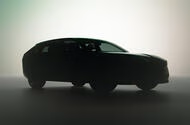What Makes the Skoda Vision O Estate Concept Stand Out?
If you’ve been following the evolution of electric cars, you know the market’s been flooded with SUVs and crossovers. But what about those of us who still love a good estate? Enter the Skoda Vision O concept—a car that’s not just another electric vehicle, but a bold reimagining of the classic estate, channeling the spirit of the iconic Mk1 Octavia while embracing the future.
Why Is Skoda Bringing Back the Estate—And Why Now?
You might be wondering, with so many brands chasing SUVs, why is Skoda doubling down on the estate format? The answer is simple: estates are in Skoda’s DNA. Since the modern Octavia launched in 1998, over three million estate versions have rolled off the line. That’s not just a number—it’s a testament to how deeply these cars resonate with families and practical-minded drivers across Europe.
Klaus Zellmer, Skoda’s CEO, made it clear: “This is an important segment for many of our customers and one where Skoda has been playing a leading role in Europe for many years.” The Vision O isn’t just a concept; it’s a promise to keep the estate alive in the electric era.
How Does the Vision O’s Design Reflect Skoda’s New Direction?
Take one look at the Vision O and you’ll spot the difference. The rakish roofline, clean lines, and T-shaped rear lights are all part of Skoda’s evolving Modern Solid design language. What does that mean in plain English? Think fewer fussy details, more focus on aerodynamics, and a shape that’s both purposeful and striking.
Exterior designer Jounggeen Kim summed it up: “This car is built to do it all. I see Skoda as a family-oriented brand—practical, reliable, and trustworthy. I aimed to reflect those qualities through the new Modern Solid design language.” The result? A car that looks futuristic but still feels like a Skoda at heart.
What’s Under the Skin—And Why Does It Matter?
Originally, Skoda planned to base the electric Octavia estate on the Volkswagen Group’s MEB platform. But they’ve switched gears to the upcoming SSP architecture. Why? SSP promises better performance and cost efficiency, setting the stage for a new generation of electric vehicles across the VW Group.
This shift isn’t just about tech for tech’s sake. It’s about future-proofing the Octavia estate, ensuring it can compete on range, performance, and price as the electric market matures. The Vision O is a test bed for these ideas, with Skoda eager to gauge feedback from media, dealers, and—most importantly—potential customers.
How Does the Vision O Honor the Octavia’s Legacy?
For many, the Octavia estate is more than just a car—it’s a family member. Project manager Daniel Edr put it best: the Vision O aims to go “back to the roots” of the Octavia. That means a focus on functionality, simplicity, and versatility. The steeply raked windscreen and gently sloping roofline aren’t just for show—they’re nods to the most successful Octavia estates of the past.
But this isn’t nostalgia for nostalgia’s sake. By blending classic cues with modern tech, Skoda is making sure the Vision O feels familiar yet fresh.
What’s Next for Skoda’s Electric Lineup?
The Vision O isn’t arriving in a vacuum. Before it hits production, Skoda will launch two more electric vehicles: the Epiq (an affordable entry-level EV) and the production version of the Vision 7S, which will be the brand’s most expensive car yet. Both models are part of Skoda’s broader push to electrify its range while still offering hybrids and combustion engines for those not ready to make the leap.
Interestingly, Skoda has decided not to chase the ultra-budget city car segment, leaving that to Volkswagen. Instead, they’re focusing on updating models like the Fabia, Kamiq, and Scala, with mild-hybrid versions to meet stricter Euro 7 emissions rules. This balanced approach—offering hybrids, combustion, and pure electric—shows Skoda’s commitment to giving customers real choice.
How Will Plug-In Hybrids Fit Into Skoda’s Future?
Hybrids aren’t going anywhere. Zellmer has been vocal about expanding Skoda’s hybrid lineup, especially after the positive response to plug-in versions of the Superb and Kodiaq. The appeal is clear: you get the range and convenience of a combustion engine, plus the quiet, clean driving of electric mode for over 100km (about 62 miles). For many drivers, that’s the sweet spot.
What Does This All Mean for Drivers?
If you’re in the market for a practical, stylish, and future-ready family car, the Vision O concept should be on your radar. It’s more than just a design exercise—it’s a signal that estates still have a place in the electric age. With Skoda’s track record of value, reliability, and clever design, the production version could set a new benchmark for electric family cars.
The real takeaway? Skoda isn’t just following trends—they’re listening to drivers, honoring their heritage, and pushing the estate format into a new era. If you’ve ever loved a Skoda estate, the Vision O is proof that the story is far from over.

